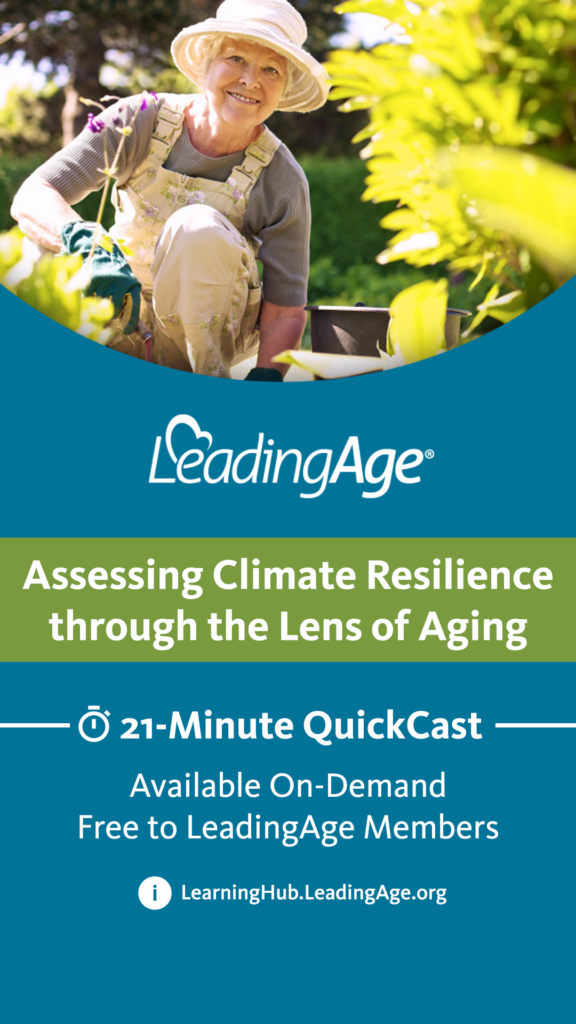Adults 65-plus are particularly vulnerable to the effects of climate change. A recent LeadingAge QuickCast explores steps to protect older adults.
Almost daily we experience or read news of wildfires, excessive heat, unusual rainfall, flooding, and other extreme weather events; and recent data reflects these events disproportionately impact older adults. Climate change poses the greatest risk to those already vulnerable with the majority of older adults minimally prepared for disasters, according to the Impact of Climate Change report from the LeadingAge LTSS Center @UMass Boston. The impact goes beyond disasters; examples include multiple consequences, from power outages affecting in-home medical equipment to acceleration of cognitive decline and dementia when an older adult is displaced from their familiar surroundings.
“How we live is hugely determined by the kind of community we live in. And the sad reality is that right now most communities are not resilient in ways that reduce risk for older adults,” says Danielle Arigoni, Managing Director for Policy and Solutions at the National Housing Trust (NHT). Arigoni is also the Author of Climate Resilience for an An Aging Nation (Island Press) and presents an informed QuickCast titled Assessing Climate Resilience through the Lens of Aging, which looks at the impacts of climate change on the rapidly growing 65+ demographic.

In the QuickCast, Arigoni poses the question, “What can we do about it?” and provides expert insights to:
- Cultivate an understanding of climate impacts on older adults
- Design climate-resilient communities
- Acknowledge that this is a job (or THE job) for all of us
To learn more, access the Assessing Climate Resilience through the Lens of Aging QuickCast and read the LTSS Center Report, The Impact of Climate Change: Why Older Adults are Vulnerable.
 CMS Debuts Models: ACCESS, ELEVATE and LEAD
CMS Debuts Models: ACCESS, ELEVATE and LEAD